What Communities Told Us: Insights from Zimbabwe’s Frontline Polio Investigation
A recent VDPV2 case in Harare prompted a rapid social investigation across three health zones. Budiriro Polyclinic stood out for its strong trust and campaign visibility, while Mufakose and Budiriro Satellite Clinic revealed gaps in awareness, lingering misconceptions, and hesitancy around multiple OPV doses. This kind of timely, data-driven research is exactly what’s needed to guide smarter, targeted outreach and strengthen Zimbabwe’s polio response.
Comparative Analysis of VDPV2 Social Investigation Findings: Perspectives from Budiriro Polyclinic, Mufakose, and Budiriro Satellite Health Facilities in Harare Province
August 2024
Denford Munyaradzi Chuma
UNICEF Zimbabwe
Background
In response to a reported case of Vaccine-Derived Poliovirus Type 2 (VDPV2) in July 2024, comprehensive social investigations were undertaken at Budiriro Polyclinic, Budiriro Satellite Clinic, and Mufakose Health Facility in Harare Province. These investigations were conducted under the leadership of the UNICEF Social and Behavior Change team, led by Denford Munyaradzi Chuma and Berhanu Abebe Agonafir, in collaboration with Norman Dzirambi and Israel Makwara from the Ministry of Health and Child Care (MOHCC), as part of a broader case investigation strategy.
The social investigations focused on understanding community-level perceptions, behaviors, and attitudes towards the polio immunization program and routine immunization services more broadly.
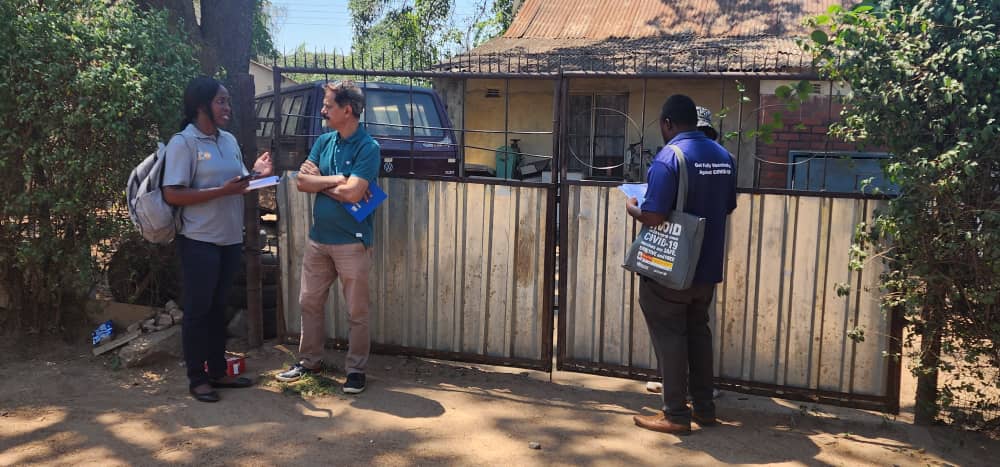
Photo: Social mobilizers gather outside a household during community interviews in Harare. © UNICEF Zimbabwe
Objectives
The primary objective was to assess community perceptions of:
- The polio campaign and the Oral Polio Vaccine (OPV)
- Routine immunization services
- Communication and community engagement effectiveness
Scope of Investigation:
- Rapid interviews with local traditional and religious leaders
- Cluster surveys of 60 households in the affected communities
- Key informant interviews with district and facility-level health promotion officers
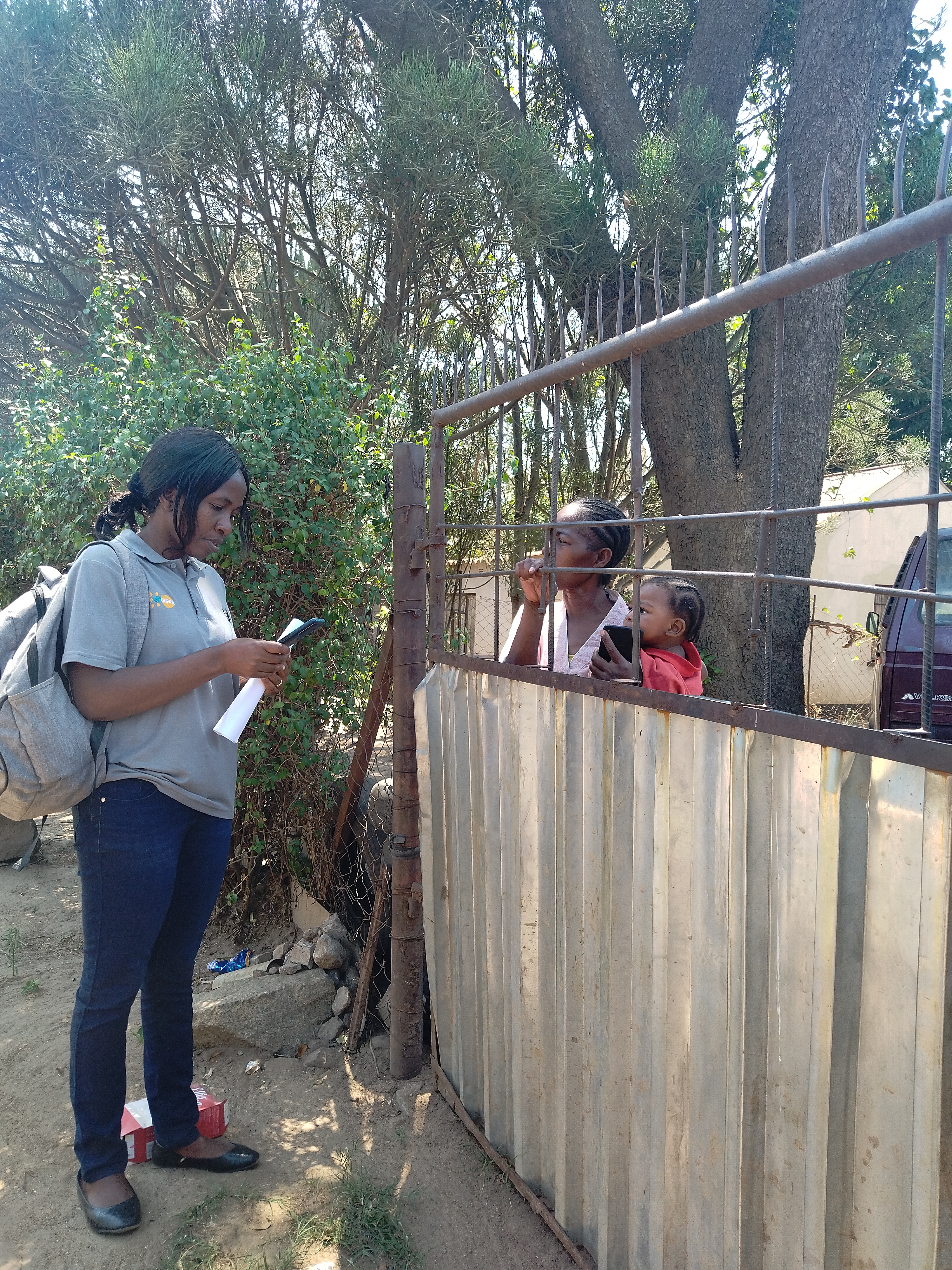
Photo: A community mobilizer listens to a young mother’s experience with immunization and health access. © UNICEF Zimbabwe
Key Findings
1. Community Risk Assessment
- Budiriro Polyclinic demonstrated high community support and excellent visibility for immunization campaigns. Outreach materials were prevalent, health workers were trusted, and no security or access barriers were reported. The area showed strong ethnic and linguistic diversity and high community cohesion around immunization.
- Mufakose showed moderate support and visibility. Religious objections (notably from the Johanne Marange sect) and inadequate information dissemination about the OPV presented challenges. Safety concerns such as poor street lighting and petty crime affected overall community perceptions.
- Budiriro Satellite Clinic offered less detailed insights into community support for immunization. However, it revealed noteworthy travel patterns and linguistic uniformity (predominantly Shona-speaking), with stable religious and ethnic composition.
Summary
Budiriro Polyclinic stands out for its robust immunization environment. Mufakose requires targeted interventions for information gaps and religious objections. Budiriro Satellite Clinic needs further assessment to fully understand its immunization landscape.
2. Household and Caregiver Characteristics
- Budiriro Polyclinic demonstrated high community support and excellent visibility for immunization campaigns. Outreach materials were prevalent, health workers were trusted, and no security or access barriers were reported. The area showed strong ethnic and linguistic diversity and high community cohesion around immunization.
- Mufakose showed moderate support and visibility. Religious objections (notably from the Johanne Marange sect) and inadequate information dissemination about the OPV presented challenges. Safety concerns such as poor street lighting and petty crime affected overall community perceptions.
- Budiriro Satellite Clinic offered less detailed insights into community support for immunization. However, it revealed noteworthy travel patterns and linguistic uniformity (predominantly Shona-speaking), with stable religious and ethnic composition.
Summary
Budiriro Polyclinic stands out for its robust immunization environment. Mufakose requires targeted interventions for information gaps and religious objections. Budiriro Satellite Clinic needs further assessment to fully understand its immunization landscape.
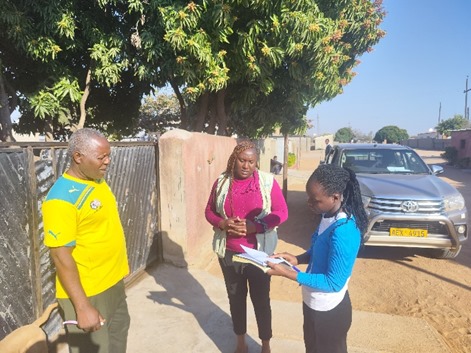
Photo: A caregiver shares her views on immunization during a street-side household survey in Mufakose. © UNICEF Zimbabwe
3. Health Beliefs and Healthcare-Seeking Behavior
- In Budiriro Polyclinic, 100% of caregivers reported visiting health facilities when children were ill. Trust in health professionals was high, and the average walking time to facilities was 18 minutes.
- In Mufakose, public health facilities were universally used. The average access time was slightly higher at 24 minutes.
- In Budiriro Satellite Clinic, 95% of respondents used public health services, with a minority opting for private care. Travel time to facilities ranged between 10 and 20 minutes.
Summary
Healthcare-seeking behavior is strong across all sites, with universal trust in professional health providers and minimal access barriers.
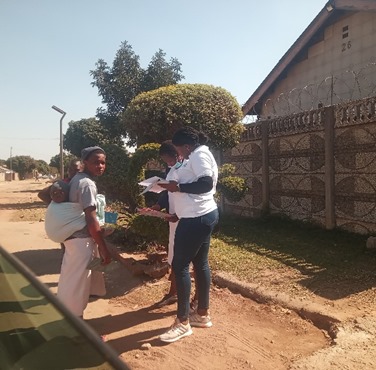
Photo: Health workers consult a mother during polio campaign follow-up in Mufakose. © UNICEF Zimbabwe
4. Caregiver Attitudes on Service Delivery
- Budiriro Polyclinic had 80% awareness of the last polio campaign prior to its rollout. Most caregivers preferred facility-based vaccination, with significant openness to home-based services. Vaccination teams were highly rated in terms of professionalism and preparedness.
- Mufakose showed 95% awareness, with caregivers favoring both home and facility-based vaccinations. Vaccinator acceptability was high, though fewer respondents felt vaccinators were fully knowledgeable (85%).
- Budiriro Satellite Clinic had lower awareness (65%), but 75% reported that vaccinators visited their households. There was broad acceptability of vaccinators, with preference leaning towards home-based vaccination (60%).
Summary
While caregiver attitudes are generally positive, campaign awareness was lowest in Budiriro Satellite Clinic, highlighting a need for enhanced outreach and communication strategies.
5. Caregiver Knowledge about Polio and OPV
- Budiriro Polyclinic caregivers displayed moderate knowledge of polio symptoms and OPV benefits. Some misconceptions (e.g., polio caused by dirty water) persisted, though 90% expressed concern about polio risk.
- Mufakose revealed divided concern levels and some safety skepticism. Community support for OPV was moderate (60%).
- Budiriro Satellite Clinic caregivers showed limited knowledge, with only 15% identifying polio symptoms. Some respondents expressed safety concerns about multiple vaccine doses.
Summary
Knowledge gaps and misconceptions about polio and the OPV remain significant, particularly in Budiriro Satellite Clinic. These need to be addressed through targeted education campaigns.
6. Sub-District Social Mobilization Insights
Health promotion officers demonstrated only moderate involvement in campaign planning and communication.
Key challenges included:
- Inadequate or late IEC materials
- Urban complexity
- Missed children due to mobility or caregivers taking children to work
- Limited robustness in existing social mobilization plans
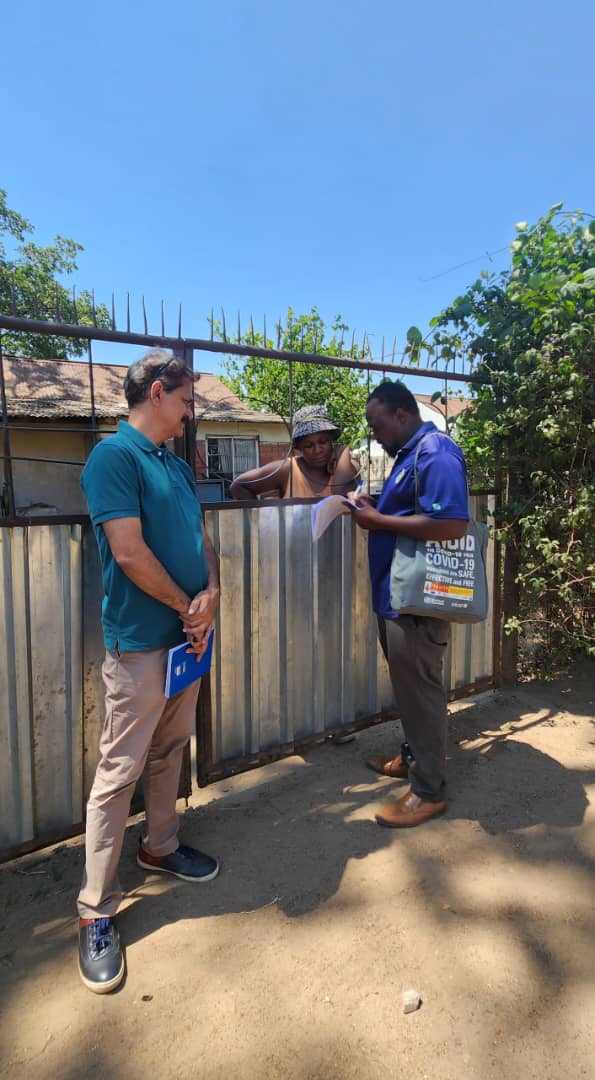
Photo: A caregiver receives follow-up information from a health worker after a household immunization check. © UNICEF Zimbabwe
7. District-Level Social Mobilization Challenges
District-level officers were mostly engaged during campaigns and showed limited leadership or consistent involvement.
Key issues included:
- Financial constraints
- Lack of targeted strategies for vaccine-hesitant or absent children
- Poor integration of social mobilization into micro-planning
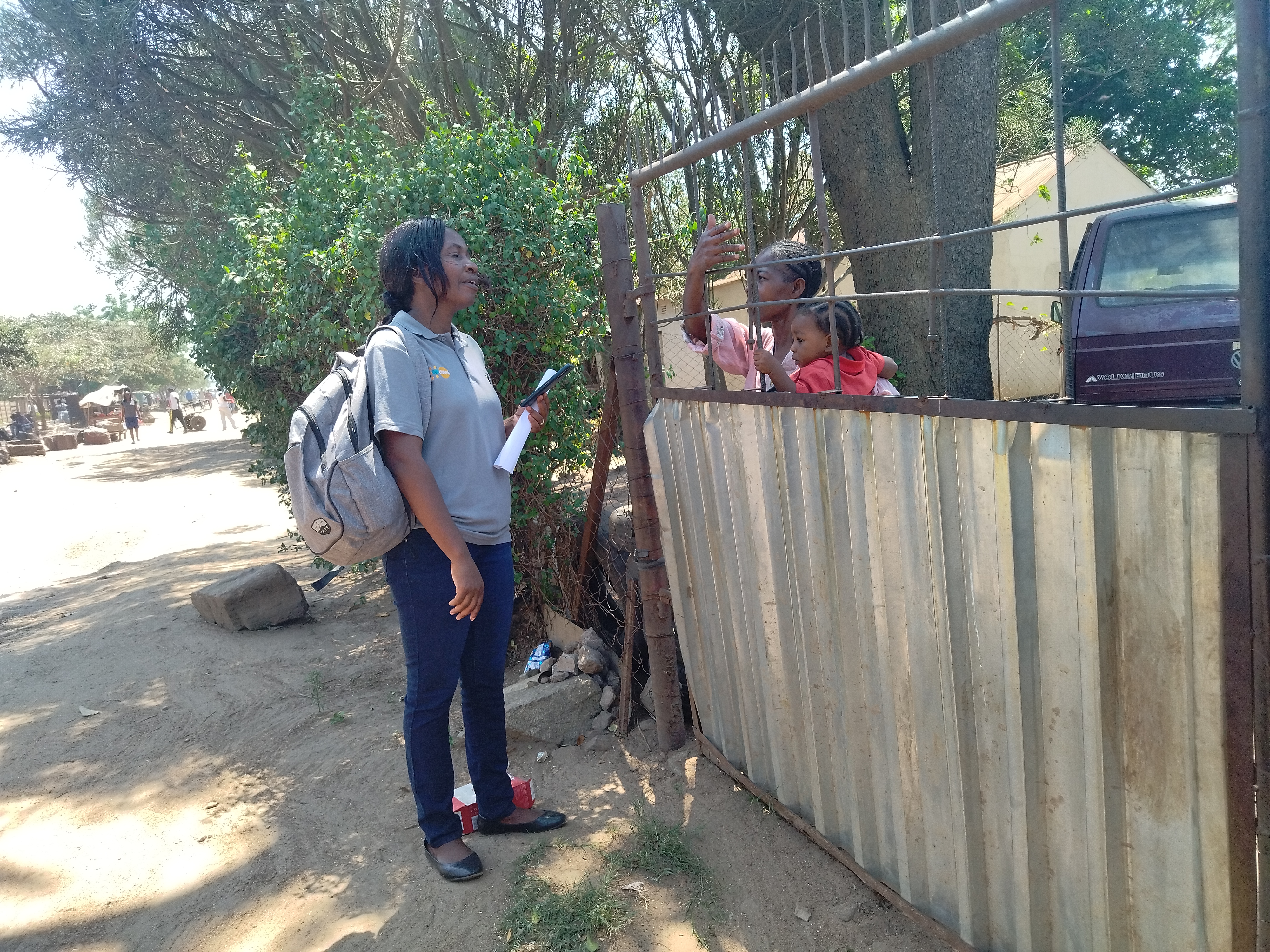
Photo: A community mobilizer engages a mother and her child during follow-up in the Budiriro neighborhood. © UNICEF Zimbabwe
Recommendations
1. Enhance Leadership and Engagement:
Fully integrate health promotion officers into campaign planning and execution.
2. Intensify Community Awareness:
Conduct large-scale education campaigns ahead of immunization efforts.
Inform caregivers promptly about campaign changes.
3. Strengthen Health Education:
Include hygiene, child-rearing, and disease prevention (e.g., cholera) in routine health talks.
4. Diversify Information Channels:
Expand beyond health workers to include schools, markets, churches, and social media.
5. Improve Access to Clean Water:
Address water contamination concerns, particularly in Budiriro, to support disease prevention.
6. Address Vaccine Hesitancy Privately:
Use private dialogue for non-compliant or hesitant households to understand and resolve concerns.
7. Enhance Community Engagement:
Promote door-to-door outreach and gender-inclusive vaccination teams.
8. Encourage Male Involvement:
Include men in immunization advocacy and messaging to boost participation.
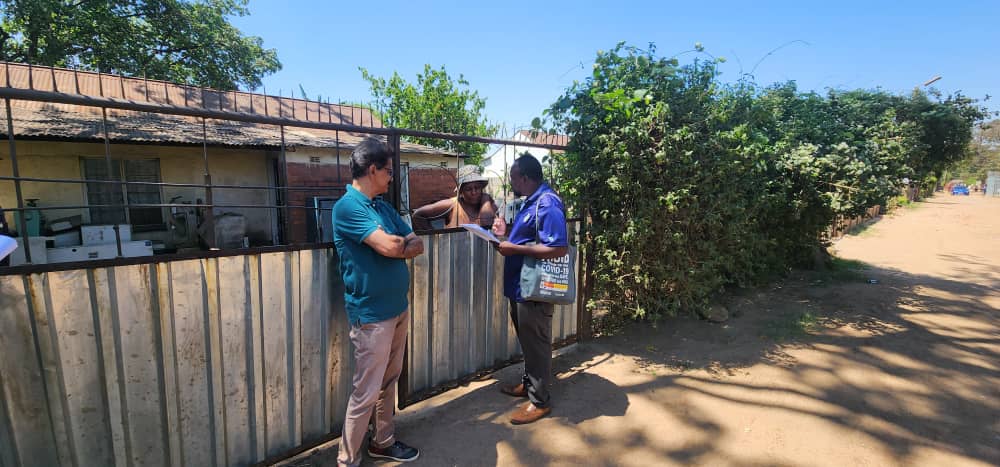
Photo: A community mobilizer discusses vaccination practices with a caregiver outside her home in Budiriro. © UNICEF Zimbabwe
Conclusion
This comparative assessment reveals critical insights into the community dynamics, communication gaps, and operational challenges surrounding the polio response in Harare Province. Budiriro Polyclinic presents a model of strong engagement, while Mufakose and Budiriro Satellite Clinic highlight areas needing intensified support. Tailored, community-specific interventions, reinforced by robust social mobilization, are essential for improving immunization uptake and ensuring community resilience against vaccine-preventable diseases.

